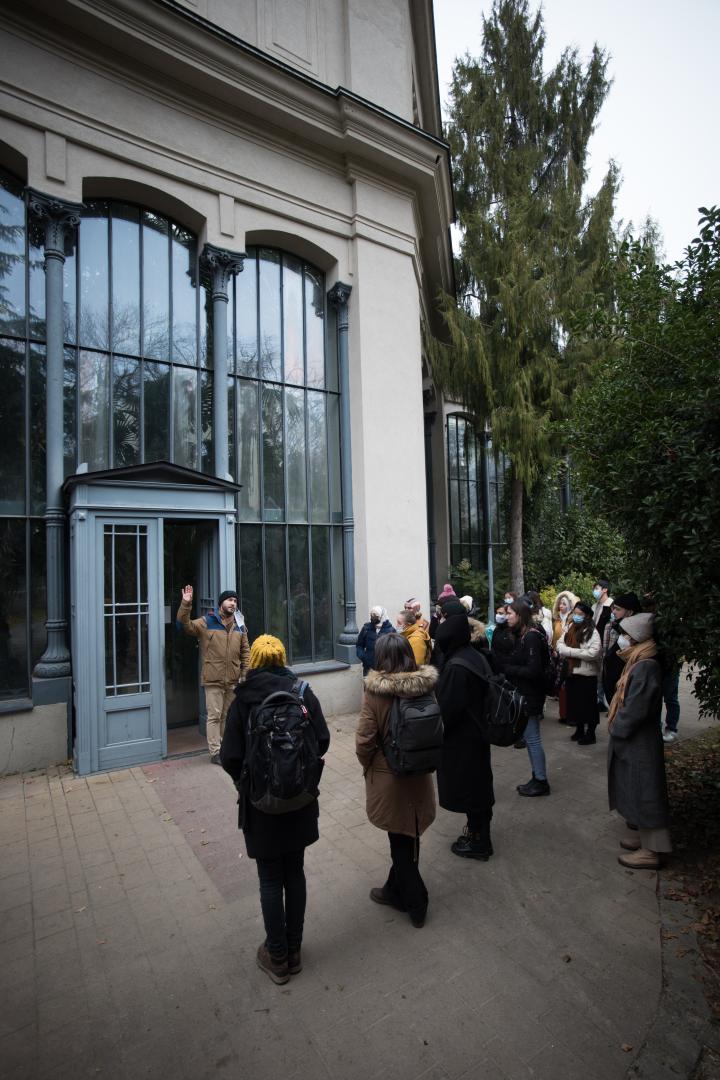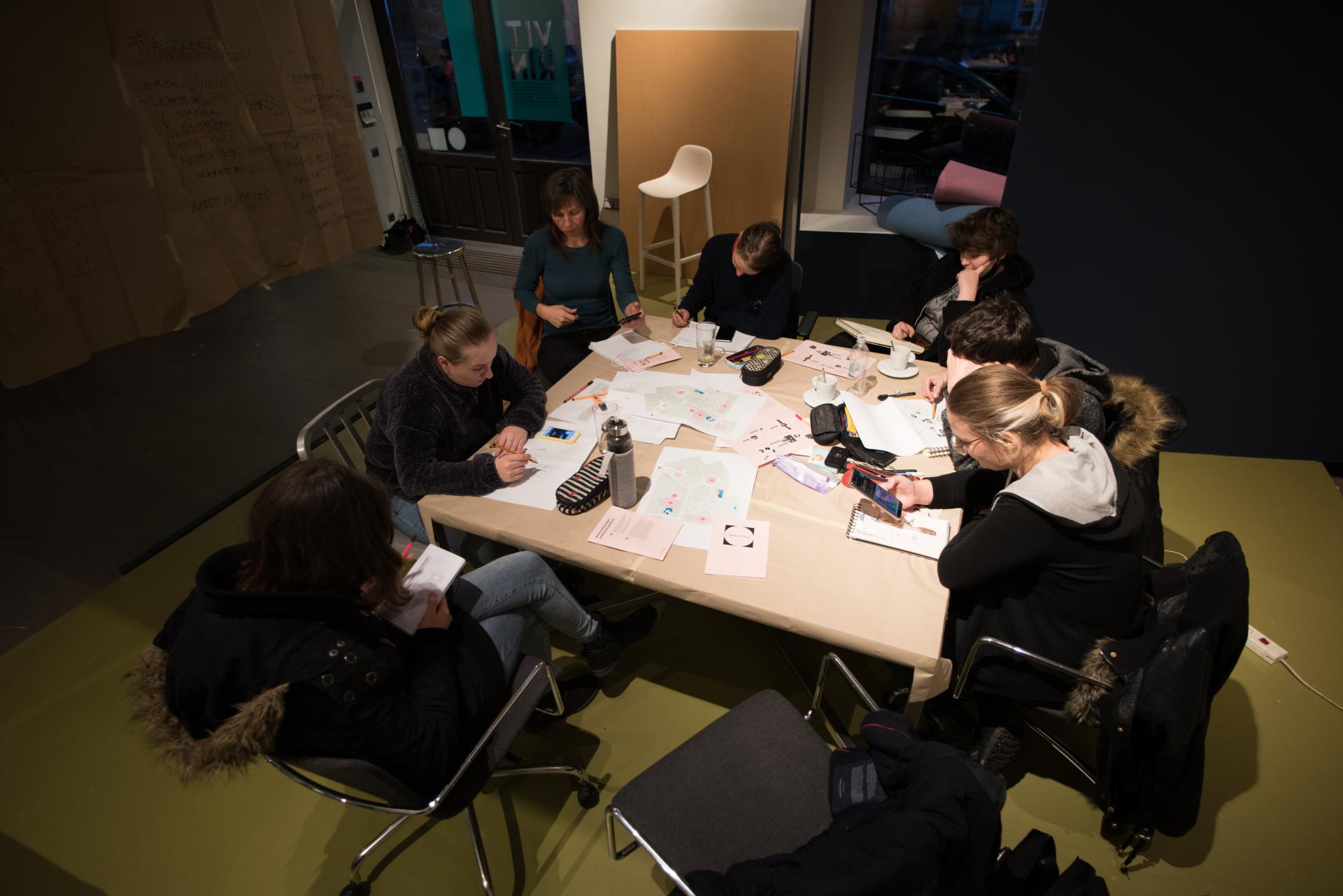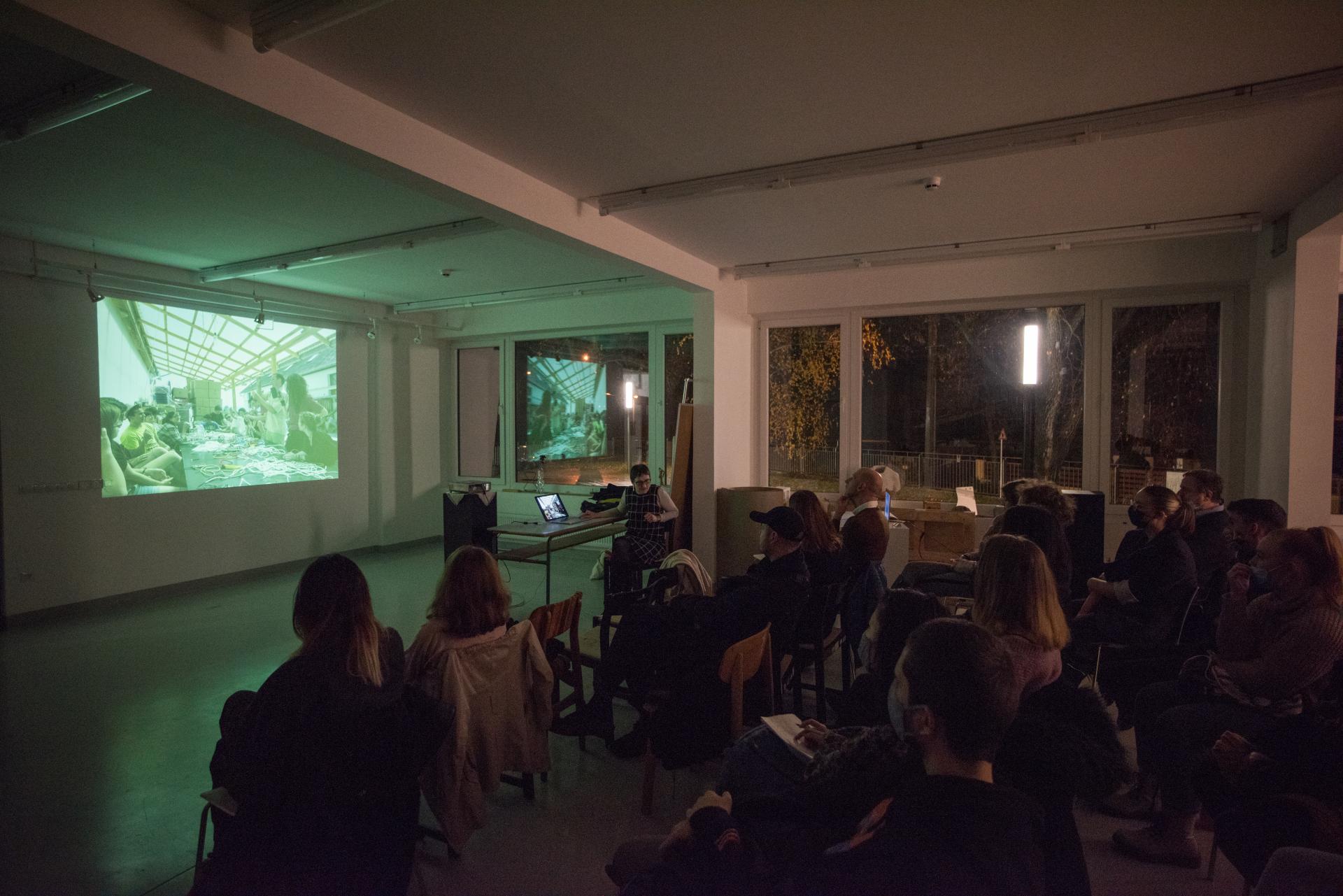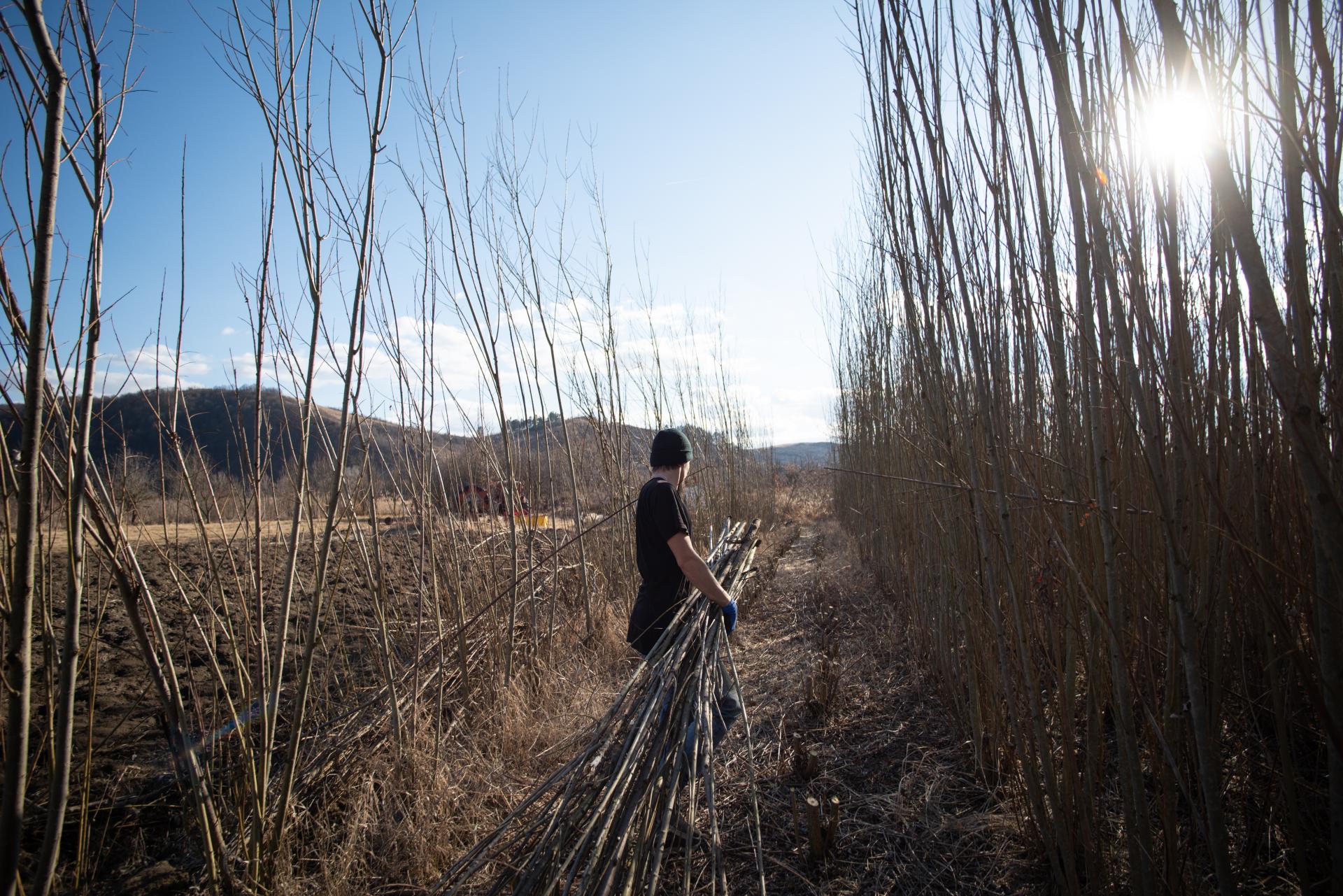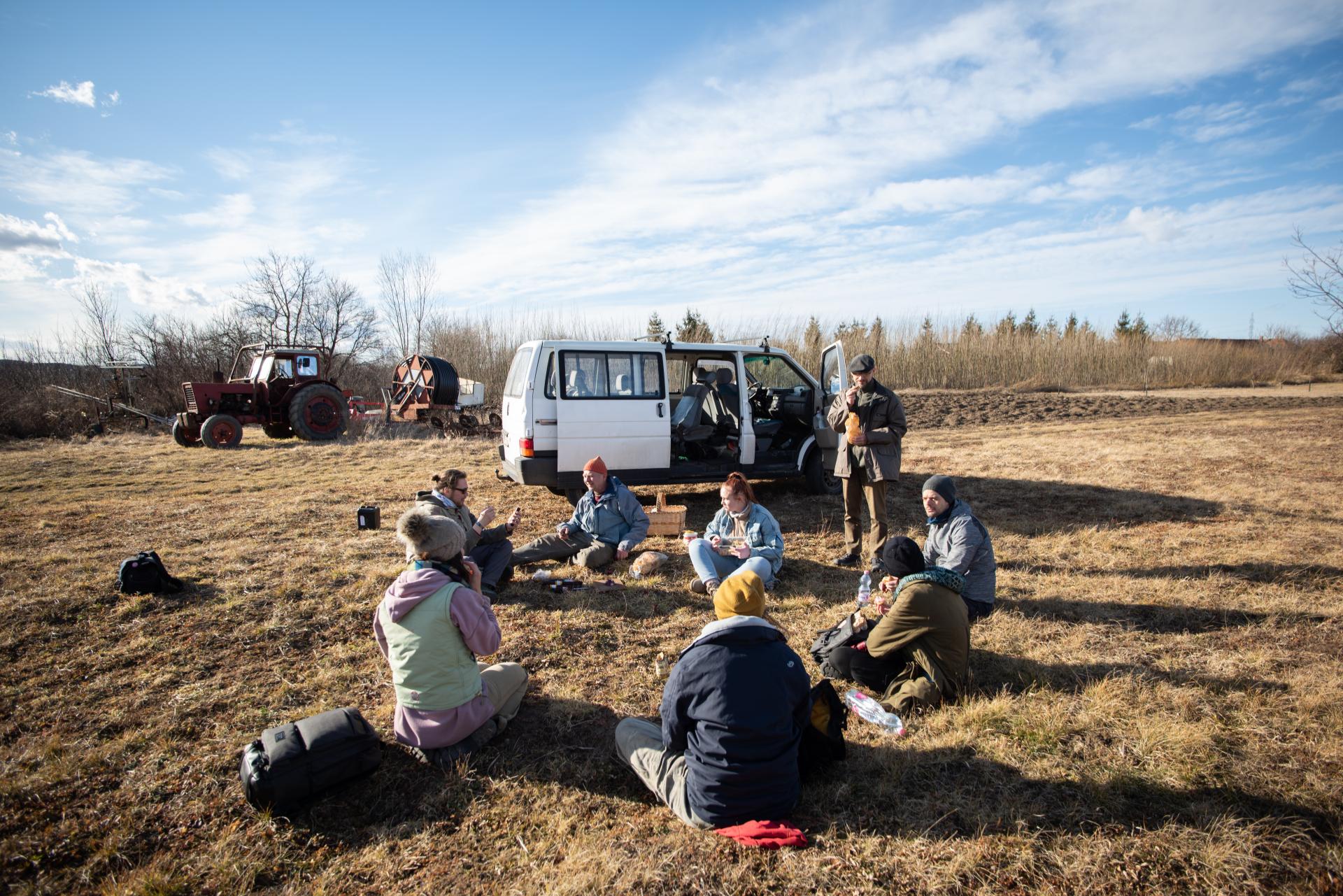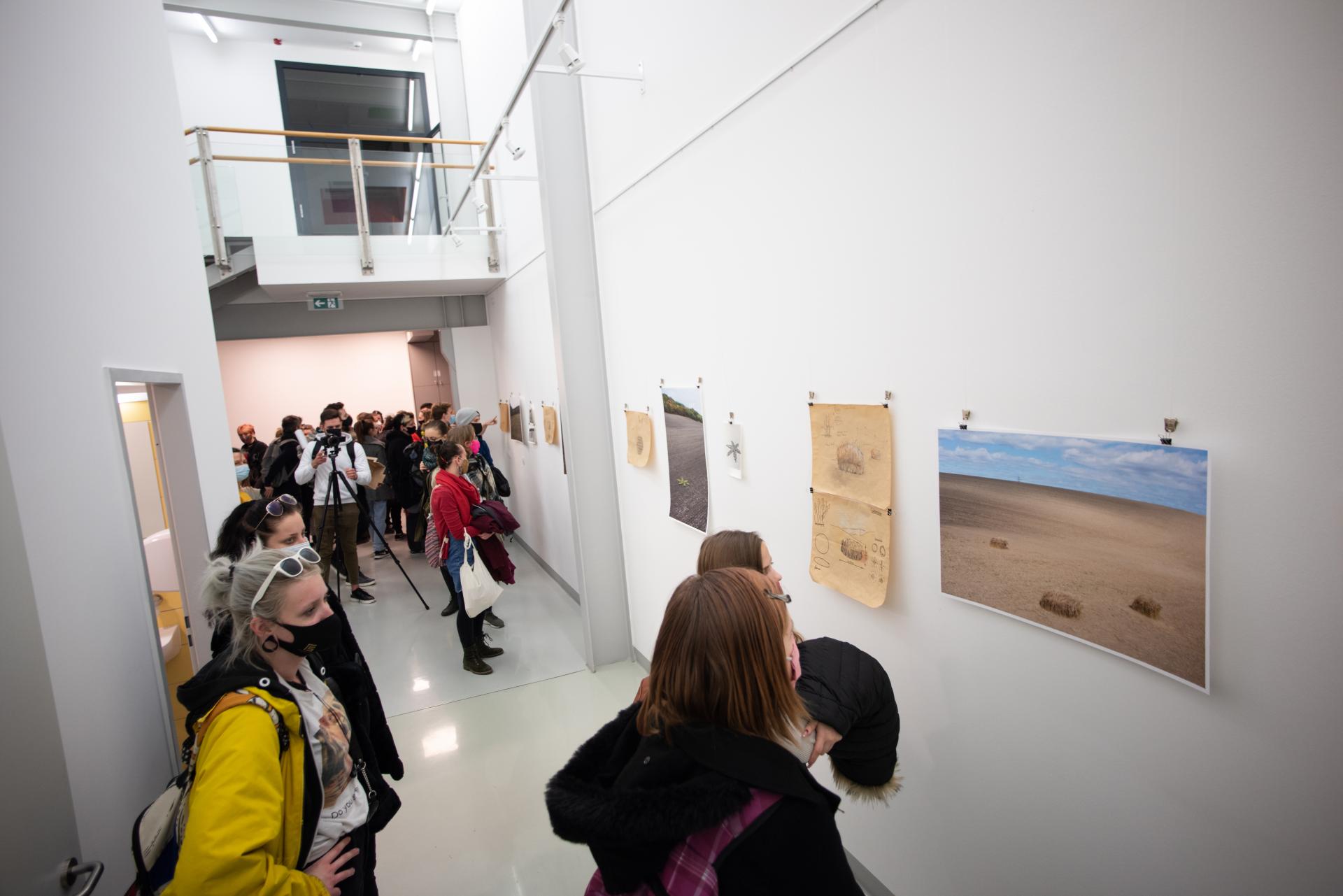Project Weeks
Basic information
Project Title
Full project title
Category
Project Description
Project Weeks is a practice-based art educational programme spanning over two consecutive weeks towards the end of the second semester, in the framework of graduate studies in Nature Art. Just like in a live situation (commission, application or exhibition), students have to build during these two weeks the plans they have developed in the preceding period. To help students, course tasks are coordinated and a set of varied and dedicated extra-curricular activities are organised by the initiator.
Geographical Scope
Project Region
Urban or rural issues
Physical or other transformations
EU Programme or fund
Which funds
Description of the project
Summary
Project Weeks is a two consecutive week long programme of artwork building in the month of April, and is based on a two semester long set of focused, coherent extra-curricular activities.
The Weeks take place in the framework of the Nature Art specialisation, a unique, accredited university level BA programme of the Institute of Fine Arts and Theory of Art at the Eszterházy Károly Catholic University (EKCU) in Eger, Hungary. Focusing on students in the second year of their studies, the project's intention is to prepare them to deal with real life situations such as applications for artist's residencies and projects, commissions, art events, their own degree project and the creative life that comes after university.
During two consecutive weeks, students build their own large scale artworks they have been developing since the beginning of the second semester. In order to provide a thorough conceptual background and a pragmatic approach towards the act of creating, all of the tasks in the second semester of the study programme's main courses have been slightly altered and coordinated. Instead of "producing" many different thematic works for the multitude of specialty courses, the students are asked to create sketches, then visual designs and models of the installations. To emphasise the spectrum of possibilities, students are taken on trips in urban and natural environments, pressing the need of finding an appropriate scale and a site, a place, a location for their installations, or, whatever they will create and do in later life. Besides hands-on experiences, artists, architects and theoreticians are invited to hold presentations about subjects which inform, either directly or indirectly, the artistic practice and spirituality of the specialisation's programme. The concept, goal, spirit of the Nature Art study programme can be summed up as a means for reconnecting with nature and regaining a sense of belonging. Project Weeks lead in this direction.
Key objectives for sustainability
The Nature Art study programme's goal is to form the intelligentsia of the future. As the name suggests, it offers students the prospects of being the avant-garde of environmentally conscious, socially sensitive artists and educators of the next generation. This BA programme lays out a set of moral and humanist values, shows them a creative attitude which takes nature into the process and strives to turn them into proactive, constructive members of society. By engaging the students in mental labour and learning through hands-on experiences, it helps them to interiorise the importance of connections with society and nature.
The creative process underpinning nature art has a strong pedagogical attribute as well. Since the very basis of EKCU's profile is to form pedagogues and the future of a thriving society depends on good education, the teachers at the Nature Art specialisation design activities that can be employed either in public or alternative educational systems. These aspects combined ensure the circularity of ideas and values of an environmentally conscious approach to all forms of everyday life.
Nature is so vast, that it is hard to comprehend, good art is "large" in size and powerful artworks are recognisable by being compact, but still overwhelming in scale. During the Project Weeks students build site-specific art installations of a scale that was unknown to them before. The sheer size of these installations emanate confidence and humbleness in the very same time. It is the declared scope of the study programme and the Project to work with natural, locally sourced or reusable materials. Simple binding techniques (rope, wire, jointing, connecting) are encouraged and hazardous processes are completely avoided.
By using natural materials, ephemeral works are created and the nature of ephemeral things is that they enter into a cycle.
Key objectives for aesthetics and quality
The scale of a large artwork is surprising, for it proposes an architectural "function", although it can only function as a conceptual and aesthetic catalyst of thoughts.
Since the large majority of man-made things and objects in our European cultural environment are proposing a simplified form and ease-of-use, from architecture to website design or economic services, the very nature of natural processes are hidden. Bearing this in mind, the Nature Art specialisation's programme proposes a sort of "rough" aesthetics that highlights the nature in things. It proposes a sort of "Unconcerned but not indifferent" attitude, as Man Ray's wise epitaph sounds.
The notion of "ephemeral", as opposed to the notion of "perennial" or "actual", remind the spectator that the nature of things is fleeting. However, and precisely because of this fleeting nature, ephemeral also suggests, that something new is approaching and that there is a future, there is something that will follow, there is a motivation to work for something that enriches constructive human spirit. Artworks of nature art have this quality encoded in them, since this aesthetic proposes a reevaluation of hard facts. "Facts become art through love" as Kenneth Clark noted. And when the idea of the nature of processes are endorsed, expressed, disseminated in a university which is mostly forming the rural intelligentsia, the hope of a thriving provincial life grows, even in spite of urbanisation.
The entire teaching staff of the Nature Art specialisation is living in rural areas, and thus the above reasoning is empirical.
Being somewhat further away from the centre, we explore. For this reason, in the preparatory phase running up to the Project Weeks, the students are taken on trips to cities, villages and a multidisciplinary set of guest lectures are organised for them. These activities create strong connections among acting individuals, thus widening perspectives.
Key objectives for inclusion
Being part of a university located in provincial Hungary, in the town of Eger, having an absolutely unique study programme, engaging in an artistic genre that is very different from "traditional" mediums such as intermedia, performance, painting, sculpture or printmaking, we accept and educate students coming from rural areas, as opposed to elite universities. None of the students at the Nature Art specialisation are "well off". Being completely outside the gallery and museum system, the goal of this non-mainstream avant-garde programme is to offer alternatives and to prepare agile, adaptive individuals. Agility and adaptiveness is shown, taught through extra-curricular activities. Project Weeks and the preparatory phase help in teaching these students how to manage in a system of institutions.
Since the genre of nature art is incomprehensible inside the contemporary, profit-oriented artworld, and as such - it is outside the elite, our "infrastructure" is established in small, local communities across Eastern Europe and other parts of the globe. This aspect enables us to connect organically with people who are otherwise not art-aficionados. The artistic language, the use of materials and space, the way of thinking that is endorsed during the programme is all about being open minded towards art, life, society and nature.
The artists and pedagogues of the future, currently students at EKCU, need-not be sensitised about the hardships in rural Hungary. They are well aware. Our task at the Nature Art specialisation is to show them ways of active management. Project Weeks is a segment in this larger picture.
Physical or other transformations
Innovative character
Project Weeks provide an opportunity for students to create a large scale artwork using natural materials. Without the bureaucratic part of an application, without the need of buying materials for themselves, without having to organise a workplace, students can focus only on the creative process: thinking, designing, consulting and building. The entire method of preparing for this two week long workflow is about showing them ways in which our natural environment can inspire the creative process, of how nature is present in the urban environment and how to enrich this built environment with nature art. Not having to deal with financial or administrative issues, a unique opportunity to create a portfolio is given to students, who would otherwise not have the time and means to create such artworks.
Due to the evolution of the history of art in Europe, decorative organic motifs inspired by natural elements have gradually disappeared from the most impressive objects of the city, town or village, namely the buildings. This evolution created a new kind of aesthetic that fueled society's distancing from nature. However, the environmental crisis appears to be presenting a paradigm shift in our conception of nature. The academic framework of the Nature Art specialisation and the pragmatic approach of the Project Weeks endorse a humble but confident, constructive but redefining creative attitude.
Our students come from provincial Hungary. The unpleasant fact is that the country is divided in two anthropologically very different parts: urban and rural. Thus the programme of the Project Weeks has also been relying on presenting urban discourse to students. Each of these discursive elements help to form a reflective thinking as an alternative to critical thinking.
Students are taught how to look, to engage, to connect, to create, to organise in order to be able to employ this know-how after their studies, whenever an opportunity to organise something in rural areas arises.

